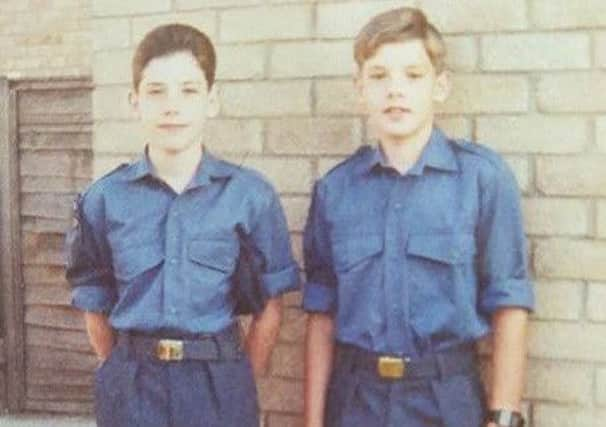Pilot remembers his golden years


Finingley Airfield closed in 1996 only to be reopened as Doncaster Sheffield Airport 10 years later in 2006. John Kenning, now 40, and a pilot since December 2017 with FlyBe commercial airline at the airport, remembers when he flew Chipmunks there from the age of 13 during the 1990s.
He said familiar landmarks during his daily drive into work cast his mind back to his halcyon days when, for his military training, he climbed into the cockpit of the small two-seat Chipmunks.
Advertisement
Hide AdAdvertisement
Hide AdHe added: “Some people think I’m a little crazy to view the current airport with such nostalgia. But I spent a lot of time at Finningley and I remember it as it was. Both me and my twin brother, Andrew, now a part of the logistics team at RAF Marham in Norfolk, had some great times there.”
John, a former Doctor of Pathology and microbiologist for the NHS, working for Leeds Teaching Hospitals, gained his commercial pilots’ licence on June 29, 2013.
The father-of-four from Hambleton near Selby, is married to Faye, who works in A&E at Scunthorpe Hospital. Despite having four children including Jack, seven, Molly, five, James, three and Timothy, eight months, and a busy job, he had a stint as a flying instructor out of Sandtoft Airport in North Lincolnshire.
On March 3, 2016, he became a full time pilot at Manchester Airport for FlyBe before flying full circle and landing his dream job in Doncaster.
Advertisement
Hide AdAdvertisement
Hide AdBut it’s his days at Finningley he remembers most fondly: “I was so keen on aircraft that I helped out with lots of odd jobs at Finningley. I joined the cadets at 12, but only got a chance to fly at age 13. I spent about four years in total there, but then I left to do A-levels and my life went in a different direction, but I never lost my love of flying and aircraft.”
He said he always wanted to work at Finningley, but never got the chance.
It was with some sadness that John saw the demise of the airfield and he further added: “I remember looking out over the empty airfield and memories of what it was like came flooding back.”
He later flew a Grumman GA7 aircraft after obtaining his commercial pilot’s licence, before graduating to his current passenger aircraft. He said: “We had a member of staff who was based at RAF Finningley, we spent lots of time there – camping in the back garden of the officers married quarters.
Advertisement
Hide AdAdvertisement
Hide Ad“We spent lots of time around the base, doing ATC activities such as competitions and generally helping out where we could. We were all very enthusiastic! I remember helping to move the Squadron leader’s office from the old navigation school to the brand new building (now Whittle House). It was an interesting evening which involved a walk through the base to the old school, down long dark corridors filled with pictures of courses past. There were lots of spooky stories about the old building and I think we were all on edge that evening. My first flight at Finningley was in an RAF red and white Chipmunk aircraft and the same aircraft is still flying in private hands.”
He said he remembered the long wait in the crew room and then finally waddling out to the aircraft with its particularly uncomfortable parachute.
He said: “That first flight was magic. We circled Coniston Castle at low level before returning back to Finningley. I spent the rest of the day dreaming and watching Jet Provosts landing as they completed their training flights. Sadly, the crew room is now the location of a large lagoon at the end of the runway.”
He added: “There was something about the base at Finningley – I always felt secure and at home there. The people were friendly and the base had a military atmosphere of calm. Its Neo Georgian architecture and tree lined avenues made for a really nice setting in which we would spend our time. Sadly, in 1996, the base closed and I had to watch as buildings were emptied and boarded up. The grass grew long and the airfield fell silent. Many times I would visit and peer through the fence at the now empty and forlorn site – wondering what the future held.”
Advertisement
Hide AdAdvertisement
Hide AdThese days he said flights usually entail flying to a destination and then flying back. His former life as a microbiologist are firmly left behind on terra firma and, although he enjoyed this job, he doesn’t regret gaining his wings and watching his dreams soar.